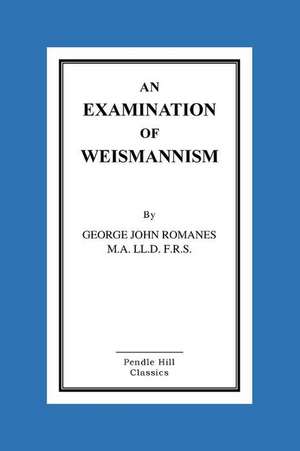An Examination of Weismannism
Autor George John Romanes M. a. LL D. F. R. S.en Limba Engleză Paperback
Preț: 40.76 lei
Preț vechi: 42.90 lei
-5% Nou
Puncte Express: 61
Preț estimativ în valută:
7.80€ • 8.02$ • 6.47£
7.80€ • 8.02$ • 6.47£
Carte disponibilă
Livrare economică 29 ianuarie-12 februarie
Preluare comenzi: 021 569.72.76
Specificații
ISBN-13: 9781518604003
ISBN-10: 1518604005
Pagini: 100
Dimensiuni: 152 x 229 x 5 mm
Greutate: 0.15 kg
Editura: CreateSpace Independent Publishing Platform
ISBN-10: 1518604005
Pagini: 100
Dimensiuni: 152 x 229 x 5 mm
Greutate: 0.15 kg
Editura: CreateSpace Independent Publishing Platform
